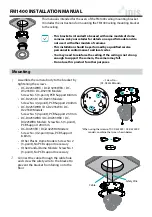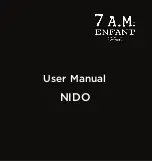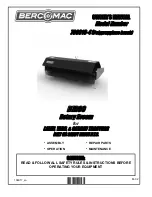
page 27
Dry-sand the neck and body to a flat, dull sheen using 800-
grit Fre-Cut® sandpaper. Clean the residue off the sandpaper
often
by rubbing it against a scrap of carpet. Any “orange-
peel” texture (caused by lacquer shrinkage as the solvents
cure out of the finish) should be removed, but don’t over-
sand. When all the little shiny low spots in the lacquer have
been removed, you’re ready to go to the next step.
Wet-sand using 1200-grit micro-finishing paper and water.
This will create a smooth satin surface that’s ready for final
polishing. Excess water and residue should be wiped off the
finish with a clean dry soft cloth as you work. Rinse the sand-
paper in soapy water often, to remove hard specks that can
scratch the finish. (Note: Soak the micro-finishing paper in
water overnight before use. It will scratch less and last
longer.)
Using soft cloths, or an electric hand drill with foam polishing
pads (a separate pad for each compound), rub out the fine
wet-sanding scratches to a final gloss with medium and fine
polishing compounds. You can follow this with swirl remover
if desired. Clean off the residue left by the polishes, remove
the remaining masking tape from the neck, and remove the
soundhole masking materials from the body.
If the above finishing schedule seems to be too much work,
you can apply a much simpler finish, as follows.
1) Sand the neck and peghead with 220-grit Fre-Cut® sand-
paper.
2) Tape off as above.
3) Fill the neck and peghead with the waterbase paste wood
filler, and the technique mentioned above. It will color and fill
in one process.
4) Spray as described above, but quit after the sixth day (9
coats).
5) Let the finish dry one week, and wet-sand with 800-grit
Unigrit sandpaper to remove the majority of shiny spots.
6) Skip the rub-out. Instead, use 0000 steel-wool to produce
a simple, flat, satin sheen.
Wet-sanding and rubbing-out the finish
Quick, easy finish
When the neck is finished, put the guitar together, but leave
the coverplate off for final adjustment of the setup. Tune the
guitar to pitch, and then fasten the screws through the fin-
gerboard extension but don’t put the inlays in yet. After the
guitar has settled in for a week or two, remove the strings,
install the coverplate, and install the dot inlays in the finger-
board extension.
If you compare the thickness of the pearl dots to the depth
of the holes down to the heads of the mounting screws —
then thickness the pearl dots accordingly — you will be able
to press the dots in dry (making it easier to remove them
should you ever need to). (The lone center dot inlay at the
17th fret in the fingerboard extension can be glued in). You
can glue all the dots if you prefer.
Restring with new strings and enjoy your new Delta
Resomaster! The old blues guys from the Mississippi Delta
would’ve loved a kit like this, to be sure!
TIP:
You may find yourself removing and re-
installing the coverplate and strings often during
setup. To save time, you can slacken the strings until
just taut, hold the tailpiece against the body, and
remove the tailpiece mounting screw. Then lift the
tailpiece free and thread it — with strings intact —
through the coverplate hand rest.
Final assembly

































